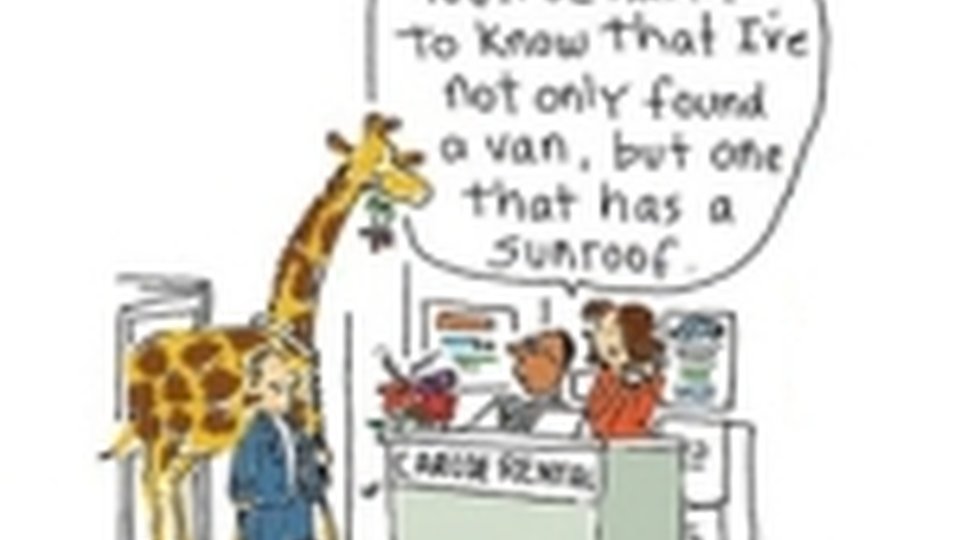Article
Good selling is good service; Good service is good selling
Sales and service are not separate functions. They are two sides of the same coin.

February 9, 2012
Sales and service are not separate functions. They are two sides of the same coin. Even if your title is customer service representative and a co-worker is a sales associate, you both have the same ultimate goal: satisfying the customer. It wasn't always this way. In days gone by, sales and service personnel used to be adversaries.
Sales and marketing people viewed their counterparts in service and operations as "those guys who never want to help me make a sale and who screw it up after it's a done deal."
Service and operations folk, for their part, tended to view sales and marketing people as "those people in suits who write outlandish ads, make ridiculous promises to close a sale, and leave us holding the bag with the customer."
In today's world, sales, marketing, service, and operations share a common goal: creating and retaining customers.
When Lines Overlap
To create and retain customers, we have to combine good selling with good service. Consider the case of Edgar Pinchpenny III, the unhappy owner of a Model 412-A Handy-Andy Cordless Electric Screwdriver. (You know he's unhappy because he is waving the 412-A around, banging it on the desk and demanding his money back.)
Using your very best Knock Your Socks Off Service skills (listening—questioning—problem solving), you determine that Pinchpenny is upset because the 412-A needs frequent recharging and isn't very powerful. But you also know that the 412-A was built for small repair jobs around the house. It absolutely was not designed for the industrial strength, barn-building, automobile overhaul sort of work Pinchpenny is trying to get out of it. That's why your company also sells the much more expensive 412-C Turbo-Andy, the best professional power screwdriver in the industry and the perfect tool for Pinchpenny's job.
Better service at the time of the original sale might have matched Pinchpenny with the more appropriate tool. But what should you do about the situation now? Tighten the chin strap on your thinking cap and consider which of these four possible actions you would recommend:
- Option 1: Tell Pinchpenny that if he hadn't been too cheap to buy the proper tools in the first place, he wouldn't be standing here screaming himself into a coronary.
- Option 2:Explain the limitations of the 412-A and the benefits of the 412-C to Pinchpenny, and recommend that he consider buying up.
- Option 3: Apologize to Pinchpenny for the inconvenience, explain the difference between the two models, offer to personally make an exchange on the spot, and give him a discount on the 412-C to compensate for being inconvenienced.
- Option 4:Apologize for the salesperson's incompetence, offer Pinchpenny an even exchange—the old, abused 412-A for a shiny new 412-C at no additional cost— throw in a free set of your best stainless steel screwdriver bits and offer to wash Pinchpenny's car.
We pick Option 3 as the best course of action: It shows concern, responsiveness, and good salesmanship. It doesn't unduly punish Pinchpenny for the human error involved in the original purchase—whether his or yours. Nor does it unduly reward him for his argumentative, and unpleasant, return behavior. Option 2 is a narrow, old-fashioned, serviceas- complaint-department response. It isn't likely to keep Pinchpenny as a long-term customer. Options 1 and 4 are the kind of answers suitable for companies where frontline people are specifically recruited with IQs approximately equal to their shoe sizes.
When Selling Is Not Good Service
There are three situations in which selling is not good service:
1. When there are no alternatives. The customer's needs cannot be met by any product or service you offer, regardless of how well you can fix the problem, answer the question, or explain the current product or service.
2. When there is no slack. You know how to solve the problem, but the customer came to you mad, has stayed mad, and obviously wants to stay mad. There is very little chance to make the customer unmad, let alone sell an upgrade or a switch to a different model.
3. When there is no point. An upgrade or add-on would be totally illogical, unrelated, or inappropriate to the situation, as in, "Would you like some garlic bread to go with your cappuccino this morning?" or "Ma'am, this new plan could save you up to $60 on your new telephone bill" when the customer's entire bill is just $35 per month. Make sure you're offering customers something that is relevant and appropriate to their situation.
When Selling Is Good Service
There are five situations in which selling is good service:
1. When the product or service the customer is using is wrong—but you know which model, system, or approach will better fit the customer's needs and are in a position to get it for the customer. "It's going to be difficult to get the fast downloads you want on podcast or photo files with your current dial-up service. You might want to consider upgrading to our new digital service to get the speed and performance you're after."
2. When the product or service the customer acquired from your company is right—but some other part, program, or process is needed before your product or service will perform properly: "Your computer operating system is Windows 2003. Our software is designed for Windows 7. I do know of an upgrade for Windows 2003 that might work."
3. When the product or service in question is out of date—"I can send you a new widget and walk you through the repair when you receive it. I also think it would be a good idea to consider a newer model that will do the job better. The Laser XJ7 has improved circuitry and can . . ."
4. When an add-on feature will forestall other problems— "I see you decided against extended warranty protection. Since you've had two problems during the warranty period, I wonder if you shouldn't reconsider that decision?"
5. When changing the customer to a different product or service will be seen as value-added or TLC—"This checking account requires a very high minimum balance. That's what caused the service charge you are concerned about. I'd like to recommend a different plan that I think will fit your needs better and save you from incurring future charges."
If it says customer service on your name tag, then serving the customer is your full-time occupation. But remember: Even if nothing in your job description hints at a sales responsibility, you are a part of the sales and marketing team. Yours is always a two-hat job.
Reprinted, with permission, from "Delivering Knock Your Socks Off Service, 5th Edition" © 2012 Performance Research Associates, Inc. All rights reserved. Published by AMACOM Books, Division of American Management Association, 1601 Broadway, New York, NY 10019





